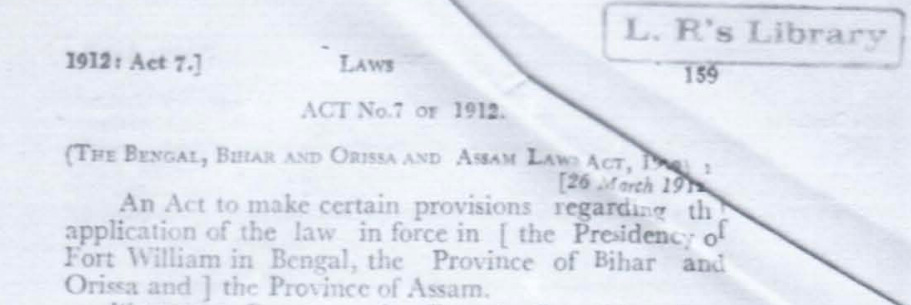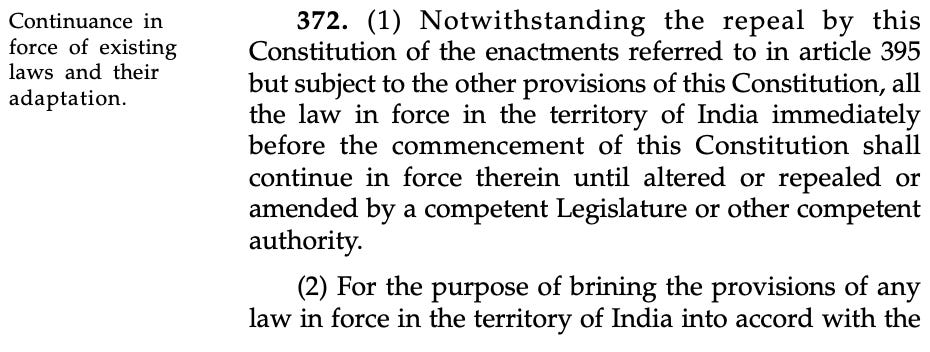Why is the 22nd of March important for all the students of law in India?
Some reflections on Bihar Diwas/Foundation Day.
The modern-day states of Bihar, Jharkhand, Orissa, and Assam were once integral parts of the expansive Bengal Presidency. The administrative evolution of these regions, leading to their recognition as distinct provinces, is an important chapter in Indian history.
Legislative History:
December 12, 1911: Announcement of a separate state at Delhi Durbar
The Delhi Durbar of 1911, held to commemorate the coronation of King George V, witnessed a significant announcement. The British Crown declared its intention to carve out separate provinces for Assam and Bihar, marking a crucial step towards administrative reorganisation.
March 22, 1912: The Government of India Act, 1912
The political decision announced at the Delhi Durbar was formalized through the passage of the Government of India Act, 1912. This Act, which received royal assent on June 25, 1912, served as the legal instrument for the creation of the Province of Bihar and Orissa. The Act's primary objective was to restructure the Bengal Presidency, resulting in the establishment of Bengal, Bihar and Orissa, and Assam as distinct provinces.
March 26, 1912: The Bengal, Bihar and Orissa and Assam Laws Act, 1912
This Act, officially passed by the Governor-General of India in Council, came into force on April 1, 1912. The Bengal, Bihar and Orissa and Assam Laws Act, 1912, was enacted to ensure the continuity of existing laws within the newly formed territories. Its core purpose was to maintain the applicability and enforceability of the laws that were in force under the Bengal Presidency within Bihar and Orissa, as well as Assam.
Significance of 22nd of March vis-a-vis The Bengal, Bihar and Orissa and Assam Laws Act, 1912:
Section 9 of this Act is particularly significant for lawyers in India. It explicitly addresses the adaptation and modification of existing Indian laws which later envisaged under the provisions of Article 372 of the Constitution of India.
This direct reference highlights the enduring relevance of the 1912 Act's principles of legal continuity and adaptation, which played a crucial role in shaping the post-independence legal framework of Bihar and the wider Indian legal system.
This connection is vital, as it demonstrates the historical roots of legal processes that gave us what we know today as savings clause, transitional provisions, preservation clauses or repeal clauses.
Creation of Orissa and Jharkhand:
The administrative landscape of Bihar underwent further transformations with the separation of Orissa into a distinct province in 1936. Subsequently, in 2000, the state of Jharkhand was carved out from the southern districts of Bihar, marking another significant reorganization.
Final notes:
The separation of Bihar from the Bengal Presidency in 1912 was the culmination of various administrative, political, and socio-cultural factors. Simultaneously, there was a growing and increasingly vocal sentiment among the Bihari populace for the creation of a separate province. This demand was largely rooted in a distinct linguistic and cultural identity that differentiated the region from Bengal. As the saying goes, "Identity makes the state and not the other way round."
The large-scale celebration of Bihar Diwas gained significant momentum starting in 2010, largely through the initiative and efforts of the Bihar government under Nitish Kumar. Recognizing the importance of this historical milestone, the Bihar government annually declares March 22nd as a public holiday across the state. What is important here to highlight is we can’t really remove our colonial history, and what we’re celebrating today is the work done by them.
Different institutions like Patna University and High Court of Patna created on this day still functions and roots back the history to this day. The Patna High Court started functioning from March 1, 1916 ceasing the jurisdiction of the Calcutta High Court over Bihar and established an independent judicial administration. Similarly, Patna University came into existence on October 1, 1917. The establishment of the university was a result of a committee appointed by the government on May 19, 1913, to facilitate the creation of a university in or near Patna. This laid the foundation for the expansion of higher education in Bihar.
Today this day is important to celebrate this statehood and showcase the culture and state identity. For lawyers in India, understanding the historical context of Bihar's formation, particularly the legislative underpinnings, provides valuable insights into the evolution of Indian law and its continued relevance. The foundations laid on March 22, 1912, continue to shape the legal landscape of the region and resonate across the nation.





